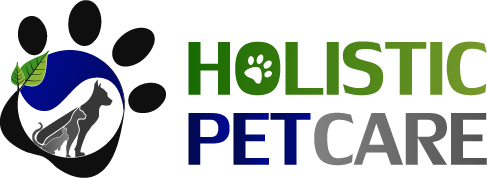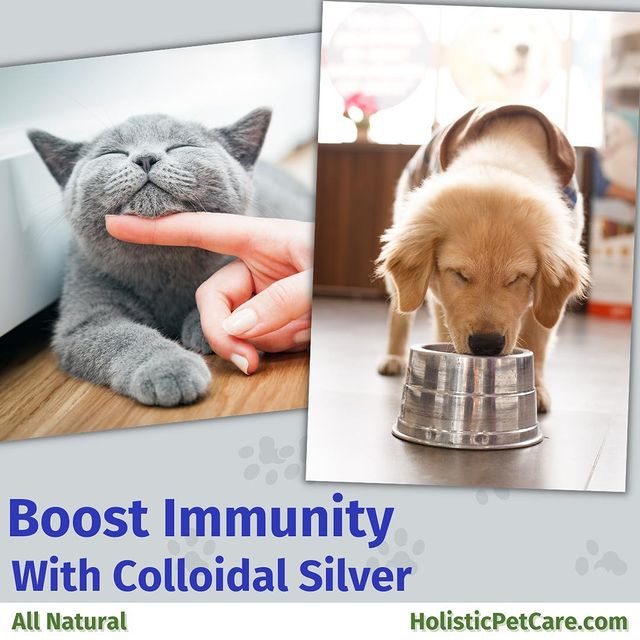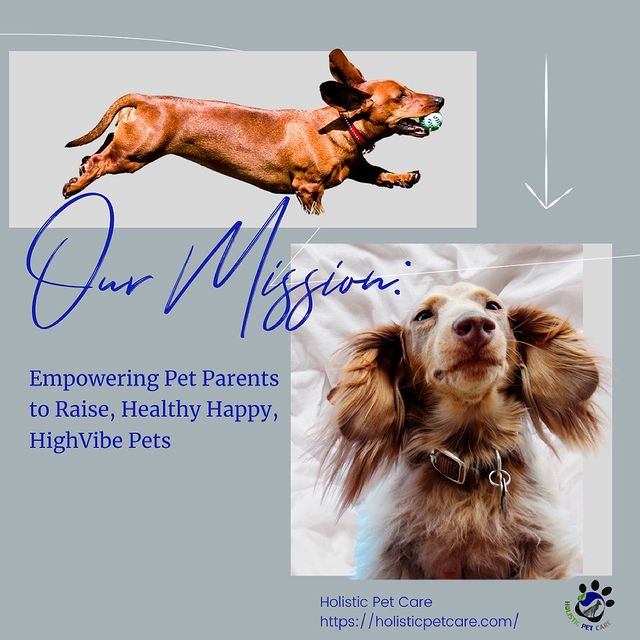Yeast Infections In Dogs
Jul 29, 2022
Yeasts are single cell organisms, which are found on the surfaces of all living things, including your dog’s body. Yeasts normally live on the mucous membranes of the digestive tract. One family of yeasts called, Candida albicans, live in the digestive tract and consume substances such as sugar and fats in order to survive.
When our dog’s immune system is healthy, the body is able to destroy the yeasts and keep them under control. However, when the immune system is weak, the yeast, being an opportunistic feeder, may produce in mass amounts causing toxins that disable the immune system and prevent it from functioning properly. At this point, the system becomes altered causing a host of health problems. So, It goes without saying that an overgrowth of yeast toxins will affect your pet’s immune system, nervous system, and their endocrine system. Since these systems are all interconnected, yeast toxins play a major role in causing allergies, bladder infections, skin disorders and many other health problems.
Yeast infections in dogs are usually found in the skin and ears and are caused by an organism called Malasezzia pachydermatis or malasezzia for short. Malasezzia, interestingly enough, appeared on the dermatology scene about 10 years ago, but may have been around a lot longer. It used to be, and still is in many dogs, one that is ever-present but doesn’t do any harm. In the dog?s ears, it is considered a secondary pathogen, but in the skin it is now recognized as a primary one, although there is usually a predisposing cause that changes it from an innocent bystander into an itchy, relentless problem.
Many times,dogs that are suffering from malasezzia will have skin lesions or sores. These lesions can be only one or two or, localized in patches, or in some cases all over the body. These sores are usually red and are accompanied by areas of increased pigmentation hair loss and scaliness or greasiness. This scaliness and greasiness with a yellowish tint is usually indicative that malasezzia is the culprit. The dogs are also usually very itchy and have a musty type odor. The most common sites for these sores are the underside of the neck, the belly, and the feet, especially between the toes.
Candida albicans is another yeast-like fungus that normally lives in a healthy balance in the body. When the balance is upset, infection results. This is known as Candidiasis and the fungus travels to all parts of the body through the bloodstream.
As mentioned above, Normally, the large intestine hosts a balance of beneficial bacteria (Lactobacillus acidophilus and Lactobacillus bifidus) along with yeast. The harmful Candida is usually kept in check by the Lactobacillus bacteria, partially by the production of lactic acid. Candida actually provides growth factors for Lactobacillus. They exist in a natural balance, until something happens to upset that balance.
Although there is no “single factor” responsible for turning this naturally occurring organism into an agent of disease, the candida species is notorious for being an “opportunistic” pathogen: “They incite disease in hosts whose local or systemic immune attributes have been impaired, damaged, or innately dysfunctional”. Candida has a tenacious ability to adhere to mucosal surfaces. This is a necessary step for the initiation of candidiasis, and adherence depends on the immune status of the host. Candida secretes enzymes which destroy membrane integrity, leading to dysfunction. Candida also secretes toxins which activate the immune system, overload the liver, and deposit in body tissues.
The main cause of yeast infections, such as Candida Albicans, is from grain-based foods and drugs, chemicals and poisons. Cooked foods anything in a can or a bag, vaccines which compromise and destroy the natural immune system, antibiotics which kill the friendly bacteria which would ordinarily fight and overwhelm the yeast, steroids that shut down the body’s ability to fight back, and any and all other drugs, chemicals and poisons, including frontline, advantage, program, heartguard, etc, that compromise the immune system are all additional reasons for seeing such a preponderance of yeast infections. Yeast infections seem to be one the most under-diagnosed illnesses in the veterinary field.
Many different types of traditional treatments are being used to treat yeast and other skin problems. Although drugs are temporally effective for the symptoms, they do not eliminate the cause of the symptom. I believe you need to get at the cause, you need to look at the whole picture, the whole dog if you will. Once the cause is found, a PREVENTION PLAN can be initiated.
Prevention is the cure!
Immediately you need to get your dog on raw meat, bones and organs with specific supplements to balance and boost the immune system, cleanse these toxins from the body, re-establish the good/friendly bacteria to help the body to crowd-out and combat the yeast and enhance the level of nutrition. As prevention, these must be permanent lifestyle changes for your dog in order for him/her to be able to resist any future yeast infections.
Dogs are carnivores and as such, they require a raw, species specific diet!
I am often asked if there isn’t a “premium or high quality” processed diet that would help just as much to rid the dog of yeast. My answer is a resounding NO! If you want to know more about why there simply is NOT any cooked or processed diet in existence that is healthy for dogs, let alone one that can detox and heal, please read HERE
If you are still fearful for some reason and just not quite ready to see the benefits of feeding a raw meat, bone and organ diet, some people will slowly transition their dogs to raw by feeding a pre-packaged, ground raw diet or a freeze dried/dehydrated raw diet. While this is a huge improvement over feeding a home cooked diet or kibble and canned processed foods, please be sure to read the ingredients; most commercial ground raw diets are full of vegetables and some even contain a limited amount of grains or starches. The only dehydrated raw diet that I have found that is made without vegetables, grains or synthetic nutrients or additives is ZiwiPeak.
This may be a HUGE step for you to totally do away with, commercial pet food for your dog. However, feeding raw meat, bones and organs is the best and quickest way to heal your dog of yeast and prevent it from ever coming back again.
Yes, sure, you can take even smaller baby steps and switch to a grain and potato free kibble or canned diet for starters however, you would not be reading this article if your dog was not already suffering with yeast overgrowth or infections that seems to be resistant to all other means of eliminating it. Right? So, switching your dog first to a grain and potato free kibble or even home cooked diet (while it is a good first step) , please be warned that it will take much longer to get the yeast under control (if ever), why not just start feeding your dog the diet he was designed to eat in the first place now?
Let’s just think about this for a minute, you see, science proves dogs are carnivores and were not designed to eat grains (or vegetables) in the first place. They do not manufacture amylase in their saliva, to start the break-down of carbohydrates and starches; amylase in the saliva is something omnivorous and herbivorous animals possess, but not carnivorous animals. This places the burden entirely on the pancreas, forcing it to produce large amounts of amylase to deal with the starch, cellulose, and carbohydrates in grains and vegetables. (The carnivore’s pancreas does not secrete cellulase to split the cellulose into glucose molecules), nor have dogs become efficient at digesting and assimilating and utilizing gains or vegetables as a source of high quality protein. Herbivores do those sorts of things. Read Canine and Feline Nutrition Case, Carey and Hirakawa Published by Mosby, 1995
Dogs being carnivores/domesticated wolves – their main diet in the wild would be (and still is for wolves and other wild canines) raw prey (meat/bones/organs). In the wild they may eat small amounts of grass from time to time but absolutely NEVER would they have access to, let alone would they ever eat vegetables and/or grains.
What are anti-yeast foods I can feed my dog?
Meats?
YES – Fresh, raw (organic when possible) chicken, fish, rabbit, turkey, goat, Cornish hen, lamb beef, quail, duck.
Vegetables?
NO Since dogs do not produce enough amylase or celulase to aid them in digesting vegetables, it is best to avoid them all together.
However, if you for your own sake, you feel the need to feed some kind of vegetation keep it as close to what a wolf or wild dog would eat – organic sprouts and leafy greens that have been thoroughly pulverized or juiced can be fed in very small amounts. NOT carrots, broccoli, and squash. It would be rare indeed (and actually never observed) to see a wolf in a vegetable patch eating these types of omnivore foods. Where they have been observed eating anything you don’t see in the wild is in pastures killing and eating sheep, cattle and even in chicken pens eating chicken.
Fruits?
NO It is also best to avoid feeding fruits to a dog with yeast due to the sugar content.
Water:
Fresh, pure water is a must. If you do not drink your own tap water then please, do not give it to your dog to drink. Use purified or distilled water…add colloidal silver to the daily drinking water. You don’t want to give your dog any illnesses due to water contamination.
Cleansing and Detoxing
It is important to detox or cleanse the blood.
Toxins are the impurities that the filtering systems of the body are always at work to eliminate so that these impurities do not get into the blood stream. Once these contaminants ARE in the blood stream, the body begins to lose nutrition. The blood is either able to feed the body with good wholesome nutrients, or it is feeding the body with contaminates ultimately causing serious health issues.
Every diagnosed disease has as its root cause – toxins. These toxins are circulating within your dog’s body with every single beat of its little heart. If you will clean up your dog’s internal body, then maintain its internal cleanliness on a regular basis, your dog can return to health and stay that way.
While a raw diet as close to what a dog would in the wild will do wonders for beginning the cleansing/detoxing process for your dog, supplementing with probiotics, enzymes and glandular therapy is often extremely helpful.
Importance of Replenishing the Good/Friendly Bacteria
The good bacteria that are attached to the inner intestinal walls are benign and do not harm our dogs (or us for that matter). They don’t produce harmful chemicals or provoke immune responses and inflammation. In fact, these microorganisms actually protect us from the adherence of disease-causing bacteria, like Salmonella and Shigella, which cause diarrhea.
The disruption if the intestinal balance is where the troubles begin. The Candida yeast goes through cycles of overgrowth, where toxins are released throughout the system causing numerous or various symptoms. Candida makes a variety of toxic chemicals, which kill the good bacteria. The making of these chemicals prevents bacteria from coming back and enables the yeast to stay. If antibiotics have been used, they too kill all the good bacteria with the bad and the yeast gets a stronghold.
Give your dog probiotics to re-build the good bacteria and to help choke out the yeast.
SBO (Soil Based Organisms) I have found that these probiotics the best and fastest at re-populating the gut!
Unlike dairy and most plant-based probiotics that take months to build up the beneficial bacteria/flora in the gut, just a few doses of SBOs will quickly dispatch most cases of minor GI upsets often before you could ever have your pet seen by a veterinarian.
Provide vital “live food” dietary enzymes
Live enzymes are completely absent from all cooked and processed pet foods. These key enzymes are what provide the necessary mechanisms to help the body produce powerful antioxidant enzymes. In combating yeast infections, they play a vital role by helping to flush out the dying Candida yeast toxins from the body and free radicals at a cellular level.
Build Back Up and Strengthen The Immune System
This is vitally important if you want your dog to heal and never have a yeast problem again.
The immune system is our pet’s defense from infections such as the yeast, parasites, etc. it works constantly to keep the body in balance and to be healthy. It is the immune system which fights off dis-eases. In boosting your pet’s immune system, you are building up their defenses and raising their electrical frequencies to stay well.
Colloidal silver, Essential oils, Herbs, Homeopathy, etc. all have their place in assisting the immune system to balance and strengthen however, none of these will be able to work to their full capacity unless a whole health lifestyle is put into action.
If you are not familiar with the use of these natural modalities and their use, Please do your research or be in touch with me about a consultation and more detailed information.
What about External Care For The Skin?
Frequent bathing can actually cause more harm than good for the most part. However, if your dog still smells offensive and a good massage and/daily brushing does not help, you can give him/her once weekly baths to clear the skin of dead and dying materials. Please, only use a natural ingredient product with no chemicals, made especially for dogs that will not further clog the pores or irritate the skin.
The use of colloidal silver, essential oils or fresh, organically grown (not chemically treated) herbs in the shampoo or final rinse will assist naturally in rendering the bacteria on the skin it’s self less active as well as kick-start healing by raising the body’s electrical/vibrational frequencies. Some essential oils* or herbs that are soothing and health promoting to the skin are: Lavender, Myrrh, Rosemary, Eucalyptus or Melaleuca alternifolia.
Instead of bathing so frequently, begin brushing your dog on a daily basis to keep the pores open and to remove dust, dander and debris. You can also mist the dog’s skin with diluted therapeutic grade essential oils* or organic herbs and Aloe Vera mixture you can make yourself.
*CAUTION: When buying any natural health modality or product, be sure to read the label and if you are unsure about the ingredients or the quality of the ingredient. To find out which natural remedies/products I recommend and use with my own dogs, please go HERE and if you would like to specifically know which essential oils* I have successfully used for 15 years, you can find out more, right HERE
Time Frame For Healing
It is important to note that this is a slow cleansing process which can often take 3-7 months before you see major changes with your dog. It took time for these toxins to build up in the body and for the immune system to become overburdened, it did not happen overnight – it will take time for the body to eliminate the toxins, heal and be balanced again.
The symptoms of cleansing, detoxing and healing usually occur about 3-4 weeks into the health lifestyle changes you are making with your dog. These symptoms of cleansing, include itchiness and inflammation which will often appear to worsen during the initial two months of the program, inflamed and itchy ears, skin eruptions and/or flu-like symptoms like vomiting, loose stools, diarrhea and lethargy. This healing response effect of the body detoxifying can last for quite some period at times and requires patience on your part. Again, a consultation is beneficial to prepare you and guide you in how to best assist your dog during the healing process.
A yeast condition or infection is most often a very frustrating ailment that takes commitment and patience on your part (dog owner/guardian).
This article is from The Whole Dog- written by my Mentor/Teacher Dr. Jeannie Thomason who passed away earlier this year








